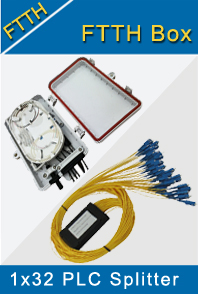-

- Sopto Home
-

- Special Topic
-

- FTTH Knowledge
-

- What is Secondary Fiber Concentration Point (FCP)?
FTTH Knowledge
- Solving the FTTH Rollout Problem in Multiple Dwelling Units
- WDM PON Introduction FAQ
- A Simple Overview of Optical Power Meter
- ODN is based on PON FTTH Optical Cable Network of the Device
- Using an OTDR to be an Expert in Fiber Link Testing
- How FTTH Broadband Works?
- Connections among Fiber Terminal Boxes & Patch Cables & Pigtails
- Easy to Install a Fiber Terminal Box
- What is Arrayed Waveguide Grating?
SOPTO Special Topic
Certificate



Guarantee
Except products belongs to Bargain Shop section, all products are warranted by SOPTO only to purchasers for resale or for use in business or original equipment manufacturer, against defects in workmanship or materials under normal use (consumables, normal tear and wear excluded) for one year after date of purchase from SOPTO, unless otherwise stated...
Return Policies
Defective products will be accepted for exchange, at our discretion, within 14 days from receipt. Buyer might be requested to return the defective products to SOPTO for verification or authorized service location, as SOPTO designated, shipping costs prepaid. .....
Applications

Sopto supply the best FTTH solutions for your network!
SOPTO Products
- Fiber Optic Transceiver Module
- High Speed Cable
- Fiber Optical Cable
- Fiber Optical Patch Cords
- Splitter CWDM DWDM
- PON Solution
- FTTH Box ODF Closure
- PCI-E Network Card
- Network Cables
- Fiber Optical Adapter
- Fiber Optical Attenuator
- Fiber Media Converter
- PDH Multiplexers
- Protocol Converter
- Digital Video Multiplexer
- Fiber Optical Tools
- Compatible
Related Products
Performance Feature
FTTH Knowledge
Recommended

What is Secondary Fiber Concentration Point (FCP)?
In certain cases, the fibers may need to be broken down at a second fiber concentration point within the FTTH network before final connection to the subscriber. As with the primary FCP, this second point also needs to be a point of flexibility allowing fast connection and re-configuration of the fiber circuits to the final subscriber drop cables.
This is termed the secondary Fiber Concentration Point (FCP). The secondary FCP is positioned at an optimum or strategic point within the FTTH enabling the drop cabling to be split out as close as possible to the majority of subscribers.
The location of the secondary FCP may be also determined by other factors such as position of ducts, tubing and access points.
Distribution cable fibers are broken down at this point and spliced to the individual or fiber pairs (circuits) of the drop cables.
The secondary FCP may take the form of an underground or pole mounted cable joint closure designed to handle a relatively small number of fibers and splices and outgoing drop cables.
Alternatively, a small street pedestal structure may be used. In either case, entry and further re-entry into the secondary FCP will be required to configure or reconfigure fibers or to carry out maintenance and fiber testing.
In the case of air blown fiber deployment, the secondary FCP may take the form of a tubing breakout device designed to allow the micro-duct cable or fiber units to be blown ‘through’ and directly onto the subscriber premises.
This reduces the number of splicing operations required. (Note-this means that air drop cables/units are fed from further back in the FTTH network – from another FCP unit).
Pole mounted secondary FCP cable joint closures are relatively secure and out of sight but immediate access may be hindered and requires special equipment for access.
Underground secondary FCP joint closures are also relatively secure and out of sight and will require a small access ‘hand-hole’ to be positioned nearby.
Secondary FCPs based on street pedestal cabinets require security and protection from vandal attack. However, immediate access to fiber circuits should be relatively simple.
Architecture influence on the infrastructure: If a PON system is used then it has to be possible to house the necessarily splitters in the closures. Most conventional closures have this option.
Related Knowledge:
A brief history of Fiber in the Loop



